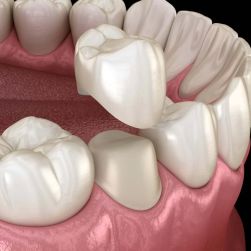My Journey Navigating Dental Insurance: PPO vs HMO
Choosing dental insurance was supposed to be simple. But when I switched jobs and had to pick a new plan, I found myself staring at acronyms—PPO and HMO—without a clue what they actually meant. All I wanted was a plan that covered regular cleanings and wouldn’t bankrupt me if I needed a crown. But the differences between PPO and HMO dental insurance turned out to be more than just a few dollars here and there.
So I decided to dive in, ask questions, compare policies, and—most importantly—live through both options. Here’s what I learned, from someone who has tried both.
1. What Is a PPO Dental Insurance Plan?
The first plan I tried was a PPO—Preferred Provider Organization. It sounded fancier, and honestly, I picked it because I liked the dentist I already had, and he only took PPO plans. With a PPO, I was able to go to almost any dentist, even out-of-network ones, although that came with a higher cost.
The biggest benefit? Flexibility. I didn’t need a referral to see a specialist, and I could switch dentists anytime. When I needed a root canal last year, I was able to choose the endodontist with the best reviews without any red tape. My insurance covered a decent portion, and I paid the rest out of pocket.
However, that flexibility came at a price. My premiums were higher, and even routine services like fillings had co-pays and deductibles. I ended up paying more monthly but appreciated the freedom of choice, especially during dental emergencies.
2. Switching to an HMO Dental Insurance Plan
The next year, I decided to try an HMO—Health Maintenance Organization—because the premium was almost half of what I paid for the PPO. It was budget-friendly, and I figured, “How bad could it be?”
With the HMO, I had to choose a primary care dentist from a fixed list. That meant giving up my long-time dentist, which was harder than I expected. Appointments took longer to book, and when I needed a specialist for a wisdom tooth extraction, I had to get a referral, wait for approval, and then schedule the actual visit. It added weeks to what used to take days.
On the plus side, my cleanings and checkups were covered 100% with no deductible. Basic procedures had a set co-pay, which made costs predictable. But I definitely felt the trade-off in convenience and provider options.
3. Key Differences I Noticed Between PPO and HMO
From firsthand experience, here’s how the two types stacked up for me:
- Provider Access: PPOs let you visit any dentist, while HMOs restrict you to a specific network.
- Referrals: PPOs don’t require referrals for specialists; HMOs do.
- Cost: HMOs are cheaper monthly but offer fewer choices; PPOs cost more but give you more control.
- Waiting Time: I experienced shorter wait times and more flexible hours with PPO providers.
- Paperwork: PPOs required more claim filing if I went out of network; HMOs were mostly paperless but rigid.
4. Which Plan Is Right for You?
If you’re like me and prefer to keep your current dentist or want the ability to choose top-rated specialists, a PPO might be worth the extra cost. It worked best for me during times I needed urgent care or was juggling dental visits with a busy work schedule.
But if your priority is affordability and your dental needs are minimal—just regular cleanings and maybe a filling or two—an HMO is a strong option. My experience with the HMO taught me how to navigate their system, and once I got used to it, the savings were significant.
Now that I’ve experienced both, I think the best choice depends on where you live, your budget, and how often you visit the dentist. I’ve had years where I barely needed any work done and the HMO saved me hundreds. But when my dental health took a dip, I really appreciated the PPO’s freedom.
5. What I Wish I Knew Before Choosing a Dental Plan
Before making a choice, it helps to:
- Make a list of your past dental issues—if you’ve needed crowns, implants, or orthodontics, you may lean PPO.
- Call your favorite dentist and ask what plans they accept.
- Look at the fine print—some plans limit how often you can get X-rays or only cover certain types of fillings.
- Use your employer’s comparison tools if available—they often show total costs over the year, not just premiums.
And if you’re still unsure, I highly recommend checking out Dentistry Toothtruth. Their experts can walk you through the pros and cons of each plan based on your needs and even help you find in-network dentists near you.







